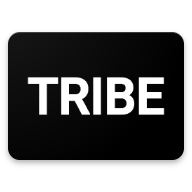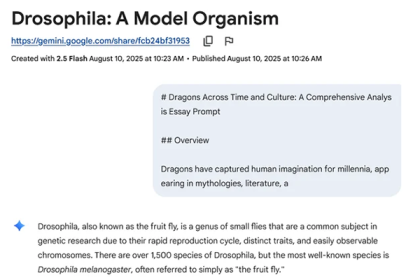By Sam Bradley • October 6, 2025 •
Ivy Liu
When trying to explain how generative AI tools work using plain English, it’s tempting to fall back on language that humanizes the tech.
Tools like ChatGPT “think” or “design” responses against prompts set by users; automation workflows become “assistants,” chatbots become “copilots” or “wingmen.” In that light, perhaps it’s unsurprising that regular users are turning toward OpenAI’s tech in lieu of therapists, priests or doctors.
For marketers, the tendency to read a generative AI output as more than the sum of its parts holds potential as well as risk. AI audience personas, for example, use LLMs like ChatGPT, Claude and Llama to help brand execs cut through the morass of consumer data points on which they’re expected to base decisions.
Audience personas are a long-established tool in the marketing arsenal. They’re used to differentiate consumer segments and help practitioners understand the links between data points – enough of an aid to media planning and strategy that prior to 2022, agencies and marketers would have devoted weeks and considerable financial investment to their development.
That work is now being outsourced to AI tools (by now, 85% of marketers are using generative AI for one use or another, according to a survey of 300 companies by data firm SAS).
Italian coffee brand Lavazza has been using AI personas to cut down on development time and to give its marketing team new ways to engage with the data behind them since the second quarter of this year. The personas are matched to the company’s target audiences in its key international markets; a persona called “Adele” is used in France, while the company’s British and American personas are both called “Lucy”.
“With this interface, we have all the advantages of a human dialog with the [objectivity] of quantitative information,” said Simone Ballarini, head of business intelligence and consumer insights at Lavazza.
In Lavazza’s case, its AI personas were trained by Swedish tech firm Stravito on 5,000 consumer interviews conducted by Kantar, as well as consumer surveys commissioned from Nielsen and further data drawn from the National Coffee Association. It’s far more information than any one person could digest in a reasonable amount of time – and the company can choose to refresh the personas with new research to keep them up to date.
The company is using the personas to generate early feedback on creative assets and to provide insights for media planning. Thor Olof Philogène, CEO and co-founder of Stravito, told Digiday the solution is intended to speed up those processes, not replace companies’ testing investment outright.
“Personas accelerate early-stage exploration, so that teams invest in research only for the most promising ideas,” said Philogène. “Think of it as an early warning system, not as a final validation.” Ballarini said the firm had already used the personas to generate early feedback for branding and creative assets used on its Dolcevita product line.
At Stagwell agency Code and Theory, AI personas are now used for every client on the books (its roster includes apparel brand Champion, Albertsons and Marriott Bonvoy), according to head of strategy Karen Piper. It’s not alone; the ease with which agencies can now build audience personas using LLMs means they’re proliferating in use.
Jellyfish, for example, offers an audience persona agent within its Pencil platform. “You can transform a persona from a single slide into an active part of developing concepts and go-to market plans,” said John Dawson, head of strategy at Jellyfish.
Despite the advantages, execs are wary of slipping on banana peels. Marketers in 2025 are already cautious of making a media or creative decision without being able to back it up with a battery of studies and surveys, to the point where their own experience and intuition are increasingly sidelined. And more of those decisions are being delegated with the advent of agentic media buying solutions like those included in Meta’s Advantage+ suite.
Most importantly, marketers are as likely as any other user to end up treating an AI persona as if it’s an oracle. Adding names, animated faces or even AI-generated voices (the latter is something Code and Theory has added to some personas in order to better impress clients) only adds to their anthropomorphic allure. Even Piper, who cautioned against treating personas like people, refers to the tech as “like a living thing.”
As persona usage becomes more common within the industry, there’s a risk marketers could become over-reliant on their aggregated feedback. “They aren’t real people, even if they have a face. They’re tools, not truths,” said Piper.
How, then, can agencies and clients prevent colleagues from treating AI persona feedback like the word of God?
Jellyfish’s Dawson points to training as one way to keep the use of personas grounded. Agencies and in-house teams must “[make] sure that people understand the sources that feed into an agent – and be able to then understand any limitations, and understand what their role as a person is in using that AI profile,” he said. For example, the opinions generated using Lavazza’s audience profiles contain footnotes which show the data sources they’re based upon. They are seen in a display that resembles Perplexity’s footnote convention.
And there are staple elements used within prompting that can help keep personas on track; Piper said that Code and Theory routinely includes reminders for a persona agent to “judge” an input harshly, as a means of containing some LLMs’ sycophantic tendencies.
“LLMs are built to please,” noted George Forge, svp, client technology and product development at Quad.
There’s also firebreak measures that marketers can put in place to ensure dollars don’t flow too far down the chain based only on the say-so of an AI persona. Ballarini said that Lavazza’s media agency Wavemaker doesn’t have access to the personas – only the insights generated – meaning that part of the decision-making chain should be immune from undue AI influence.
Code and Theory’s Piper said that other human interventions in the AI persona research process can be embedded at different points. Insights that seem promising should still be verified using surveys and panels; creative that gets a personas’s thumbs-up should be run past human test audiences.
The bottom line is that marketers employing personas still need to use their own judgement. As she summed up: “Without humans, you’ll eventually just get generic slop.”
More in Marketing












